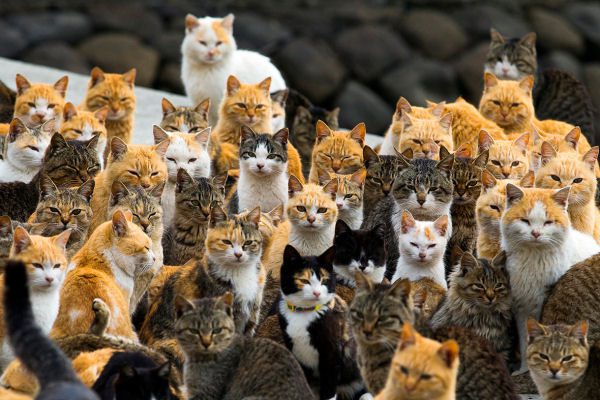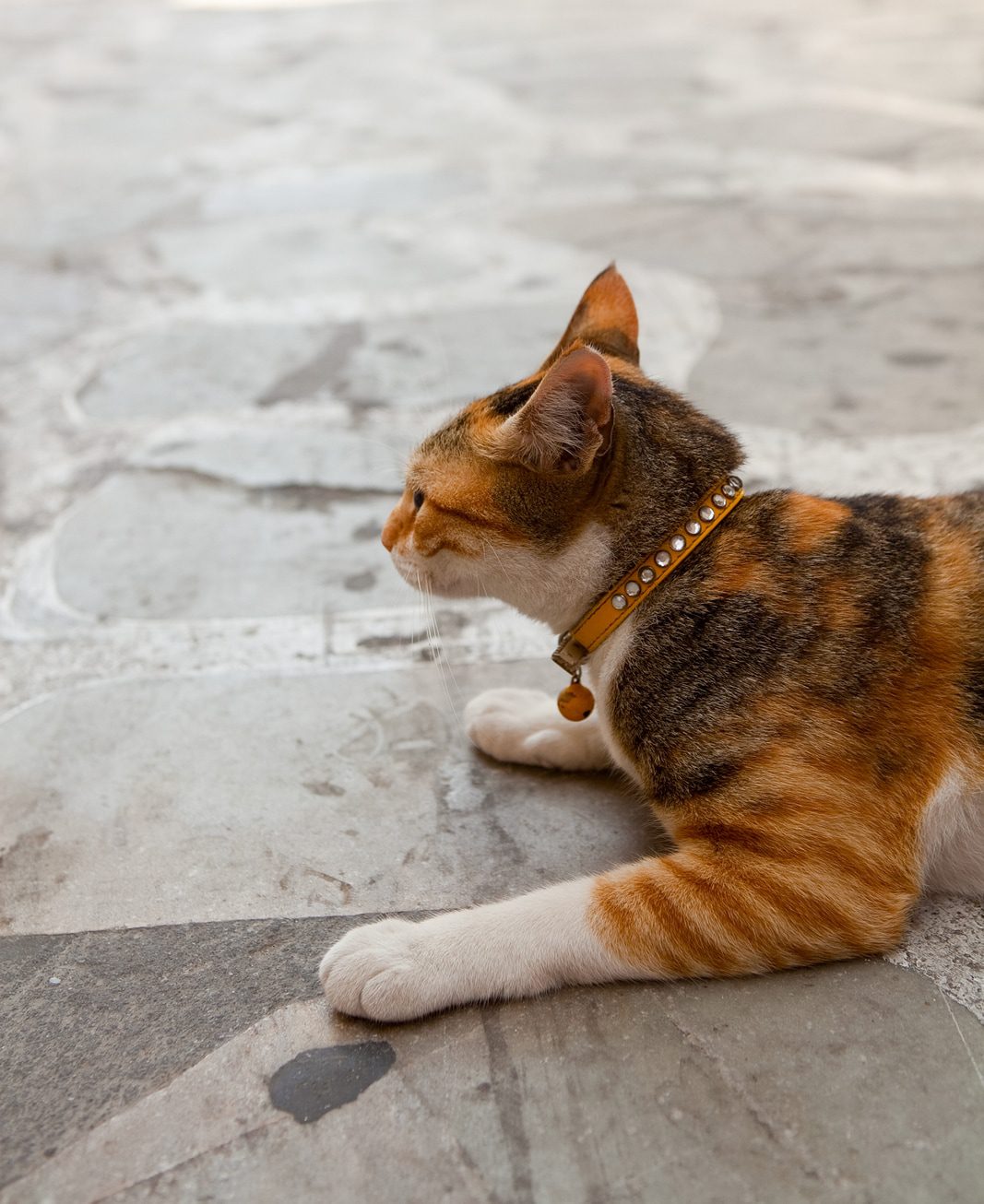
Island with more cats than people: Aoshima
The Japanese island of Aoshima, also known as Cat Island, has six times as many cats as people. The number of inhabitants is only fifteen people, according to Reuters, but by right this heavenly place belongs to happy pets.
More than 100 cats live on the island, and it seems that they are everywhere – they gather for regular feedings organized by the locals, hide in old abandoned buildings, and every day, meowing crowds welcome arriving tourists – fans of cats – at the pier. You can come to this amazing place only for one day. There are no hotels, restaurants, or even vending machines on Aoshima.
For the first time, cats were brought to this one and a half kilometer long island to control the mouse population. But it turned out that there are no natural predators on the island that would regulate the cat population. Therefore, cats began to multiply uncontrollably. Disgruntled locals tried to solve the problem with spaying, but at last count, only ten of the animals living on the island were castrated or spayed.
While Aoshima is Japan’s most famous cat island, it’s not the only one. In the Land of the Rising Sun, there are eleven so-called “cat islands” where hordes of homeless cats live, according to All About Japan.
What to do with stray cat colonies
Any population of stray cats is growing in size fairly quickly. A pair of cats of childbearing age may have two or more litters per year. With an average birth of five kittens a year, such a pair of cats and their offspring can produce up to 420 kittens over a seven-year period, according to statistics compiled by the Solano Cat Capture, Spay and Release Task Force.
Many of these babies do not survive. Up to 75% of kittens die within the first six months of life, according to a Florida Stray Cat Study published by the Journal of the American Veterinary Medicine Association.
And yet the number of homeless cats is very high.
Most animal welfare societies, such as the Solano Task Force, promote programs aimed at capturing stray cats, spaying them, and returning them to the street—abbreviated as TNR (from the English trap, neuter, release – to catch, sterilize, release). TNR advocates, including the ASPCA, the Humane Society of the United States and the American Humane Society, believe that TNR programs can reduce the number of cats in shelters and the need for euthanasia through natural attrition over time.
Among TNR’s successful programs is the Merrimack River Valley Cat Rescue Society, which by 2009 was able to reduce the population of stray cats to zero, which in 1992 had 300 animals.
However, some animal welfare groups believe that TNR programs are ineffective, not working fast enough, or not the best solution for some native species that could be wiped out by feral cat populations. For example, the American Bird Protection Organization and the Wildlife Society oppose TNR.
“After castration or sterilization, stray cats are released back into the environment to continue their wild existence. Such systematic abandonment is not only inhumane to cats, but exacerbates numerous problems, including predation by stray animals, the spread of disease, and the destruction of property,” the representatives of the American Society for the Protection of Birds write.
Cat Island in Japan: “We have nothing to offer but cats”
While stray colonies are a concern in the US, Japan’s cat island celebrates them, attracting a steady stream of tourists every year. Pets already know that when the ferry approaches, they should rush to the pier, because guests arrive on it, who bring food with them. Tourists also bring cameras with them.
The driver of the ferry, which makes two trips a day to and from Aoshima, notes a steady increase in the number of tourists visiting the island since visitors began posting photos of island cats online.
“Before, I rarely brought tourists, but now they are consistently coming every week, although we have nothing to offer them except cats,” he told the Japan Daily Press. Once in Japan, you can spend a day and see what it is, Aoshima, the Japanese cat island.
See also:
- Sense organs in cats and how they work
- How to wean a cat to beg for food from the table
- What to bring with you if you go on vacation with a cat: a checklist
- What to do if a child asks for a kitten






